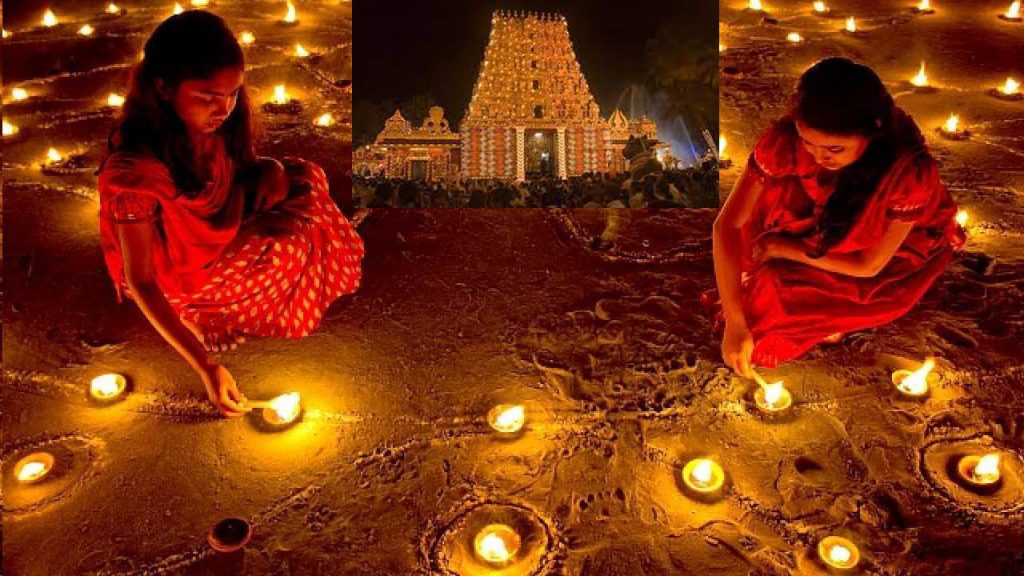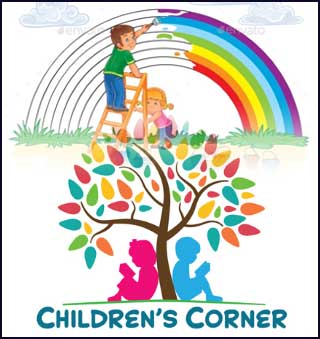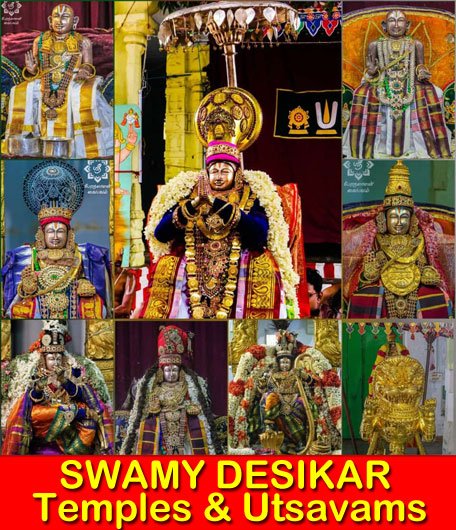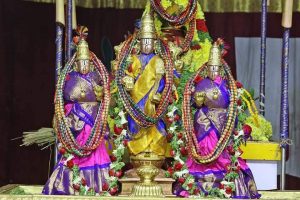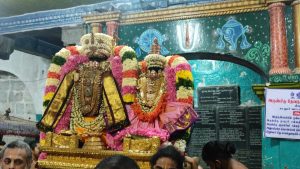Diwali (festival of lights) is the biggest festival in India. Diwali is derived from Sanskrit and called as ‘Dipavali’ in south. The festival signifies the victory of light over darkness. Hindus consider Diwali as their most sacred festival. The reverred festival is celebrated differently in various parts of India. For instance, in South India the festival will be held a day earlier than of north and western India. In East India, especially in West Bengal and Orissa, ‘Kali Puja’s is celebrated on the day Diwali is celebrated in south. On the night the Hindus celebrate Diwali, the Jain community celebrates to mark the attainment of moksha by ‘Lord Mahavira’. The Sikhs would celebrate Diwali in the name of ‘Bandi Chhor Divas’.
Diwali is treated as an official holiday in India, Nepal, Sri Lanka, Myanmar, Mauritius, Guayana, Trinidad and Tobaco, Suriname, Malaysia, Singapore, Fiji and Pakistan. Diwali dates back to ancient times in India, as a festival after the summer harvest in the Hindu calendar month of Kartika. It is mentioned in Sanskrit scriptures such as the ‘Padma Purana’ and ‘Skanda Purana’, that both completed in the second half of first millennium AD, but believed to have been expanded from a core text from an earlier era. The diyas (lamps) are considered as men. Marking the occasion, the people buy new clothes for themselves and their families, as well as gifts, appliances, kitchen utensils, even expensive items such as cars and gold jewelry.
There is a significant variation in regional practices and rituals. Depending on the region, prayers are offered before one or more deities, with most common being Lakshmi – the goddess of wealth and prosperity. On Diwali night, fireworks light up the neighbourhood skies. Later, family members and invited friends celebrate the night over food and sweets. The Yoga, Vedanta and Samkhya schools of Hindu philosophy share the belief that there is something beyond the physical body and mind which is pure, infinite, and eternal, called the ‘Atman’. The celebration of Diwali as the “victory of good over evil” refers to the light of higher knowledge by shunning aside ignorance.
In the north and central regions, the Lord ‘Krishna is adored by marking the occasion. In other regions, ‘Govardhan Puja’( Annakoot) is celebrated by the local communities, with 56 or 108 different delicious dishes for offering to Lord Krishna.In West and certain Northern parts of India, Diwali marks the start of a new Hindu year. Rituals and preparations for Diwali begin days or weeks in advance. The festival formally begins two days before the night of Diwali, and ends two days thereafter. Each day has the following rituals and significance. In Andhra Pradesh, the festivities would be celebrated over two days – Naraka Chaturthasi and Deepavali Amaavasya. Diwali begins in Konkan and Goa on the day of Naraka Chaturdashi.
Dhanteras starts off the five day festival. Starting days before and through Dhanteras, houses and business premises are cleaned, renovated and decorated. Women and children decorate entrances with Rangoli and creative colourful floor designs both inside and in the walkways of their homes or offices. Dhanteras is also a major shopping day, particularly for gold or silver articles. Merchants, traders and retailers stock up, put articles on sale, and prepare for this day. Lakshmi Puaja is performed in the evening. Some people decorate their shops, work place or items symbolizing their source of sustenance and prosperity.
Narak Chaturdasi is the second day of festivities, and is also called ‘Choti Diwali’. (Small Diwali). Typically, house decoration and colourful floor patterns called ‘Rangoli’ are made on or before Narak Chaturdasi. Special bathing rituals such as a fragrant oil bath are held in some regions, followed by minor pujas. Women decorate their hands with henna designs. Families are also busy preparing homemade sweets for main Diwali. The third day is the main festive day. People wear new clothes or their best outfits as the evening approaches. Then diyasare lit, pujas are offered to Lakshmi and to one or more additional deities depending on the region of India; typically Ganesha, Saraswati and Kubera.
Small earthenware lamps filled with oil are lighted and placed in rows by some Hindus along the parapets of temples and houses. Some set diyas adrift on rivers and streams. The relatives and friends would visit each other and exchangeg gifts and sweets. The fireworks signify celebration of Diwali as a way to chase away evil spirits. The day after Diwali, is celebrated as Padwa. The husbands give thoughtful gifts, or elaborate ones to respective spouses. In many regions, newly married daughters with their husbands are invited for special meals. Sometimes brothers go and pick up their sisters from their in-laws home for this important day. The day is also a special day for the married couple, in a manner similar to anniversaries elsewhere in the world.
The day after Diwali devotees perform Goverdhan puja in honour of Lord Krishna. Diwali also marks the beginning of a new year, in some parts of India, where the Hindu Vikram Samvat calendar is popular. Merchants and shopkeepers close out their old year, and start a new fiscal year with blessings from Lakshmi and other deities. Murat Trading, India’s biggest trading would be celebrated on Diwali. The last day of festival is called Bhai dooj (Brother’s second) or Bhai Tika in Nepal, where it is the major day of the festival. The people over there celebrate the sister-brother loving relationship, in a spirit similar to ‘Raksha Bandhan’, but with different rituals. The day ritually emphasises the love and lifelong bond between siblings. In historic times, this was a day in autumn when brothers would travel to meet their sisters, or bring over their sister’s family to their village homes to celebrate their sister-brother bond with the bounty of seasonal harvests.
At the international border for everyDiwali, Indian security forces offer Pakistani forces traditional Indian sweets. They, in turn, return the goodwill with an assortment of Pakistani sweets. The people in India would recall how the former U.S. President Barrack Obama and the ex- United Kingdom premier Camereon never forget to wish the Indians on the eve of Diwali.
K.V. Venugopal


